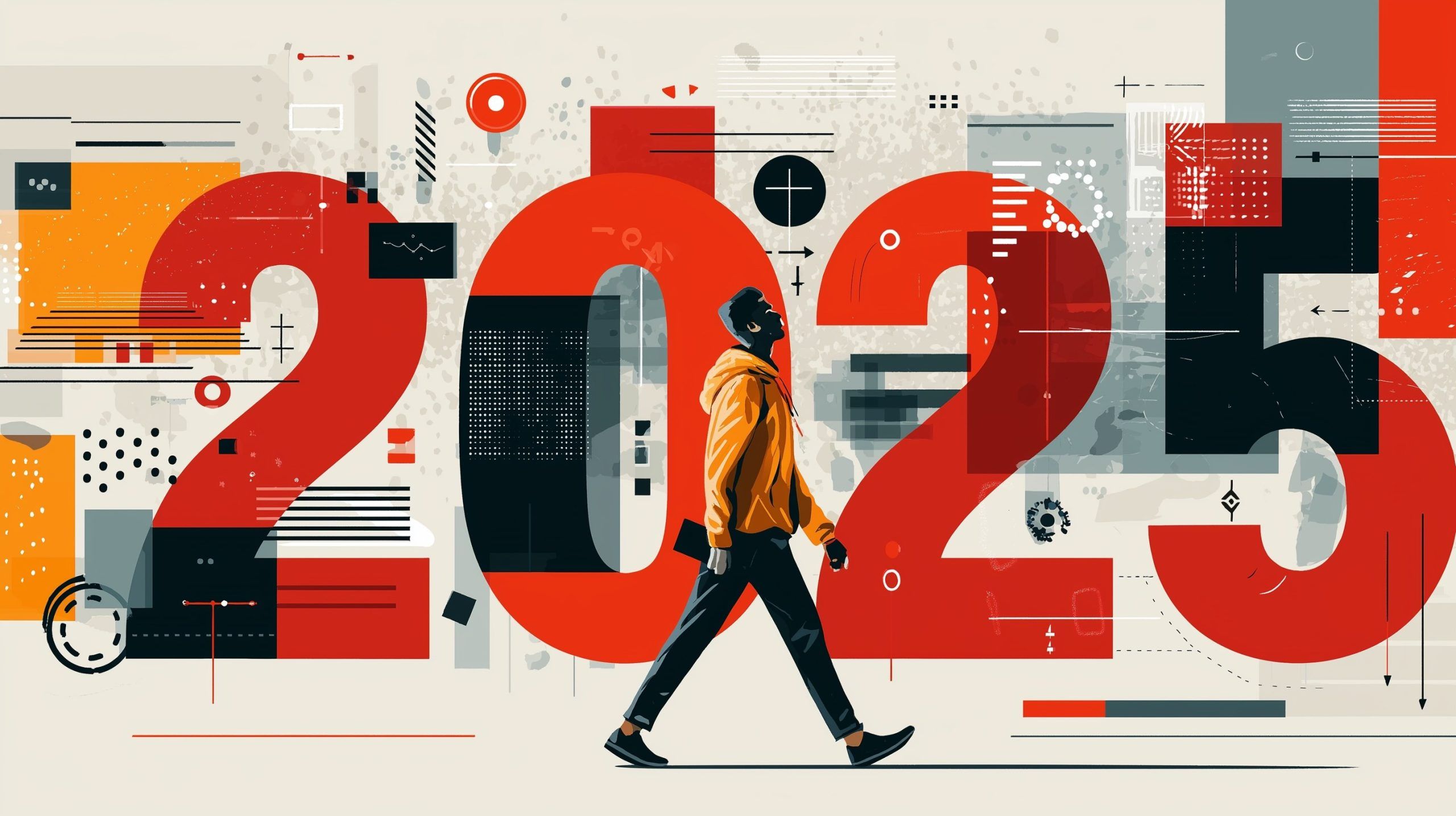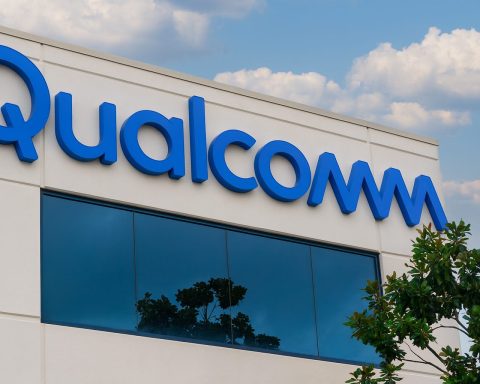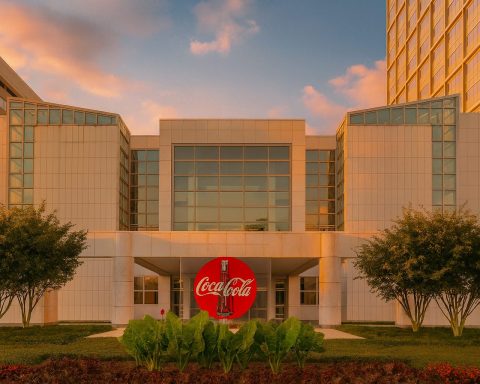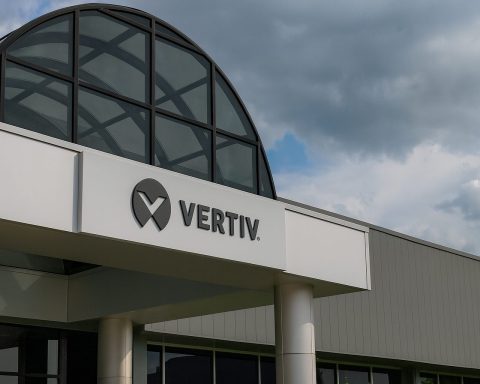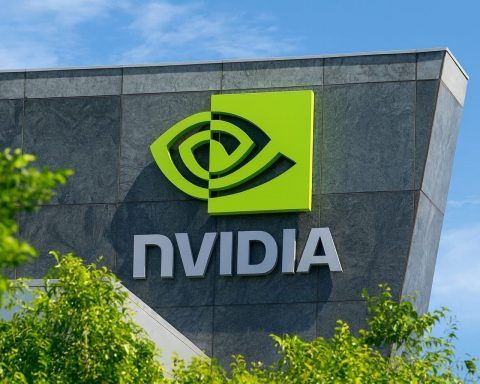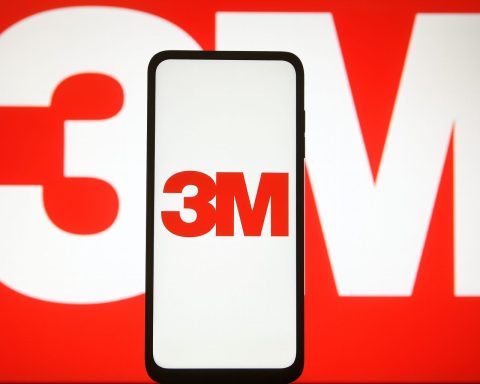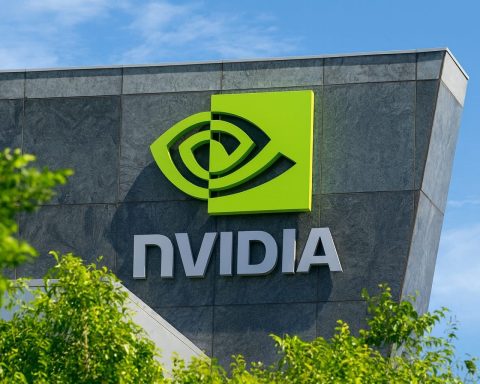- In 2025, nearly two-thirds of marketing professionals use AI or automation tools, and 95% say these technologies have made their strategies more effective.
- Generative AI platforms such as OpenAI’s GPT-4 and Google’s Gemini enable on-demand content creation with AI writing assistants and image generators.
- Approximately 21% of internet users use voice queries via smartphones, smart speakers, or in-car systems, reshaping search optimization.
- Visual search is rising, with retailers optimizing catalogs for Google Lens and Pinterest Lens to surface products by image.
- About 15 million internet users turn first to generative AI tools for searches, a figure projected to reach 36 million by 2028.
- The end of third-party cookies has arrived as major browsers phase out tracking, with 79% of consumers wanting more control and brands shifting to first-party and zero-party data.
- Approximately 80% of consumers say a company’s diversity and inclusion efforts influence their purchasing decisions, prompting DEI reporting and campaigns.
- One-third of Gen Z shoppers are willing to pay 5–10% more for sustainable products, reflecting real price incentives for eco-friendly branding.
- Nike’s So Win campaign, a 60-second black-and-white Super Bowl ad featuring Jordan Chiles and Sha’Carri Richardson, debuted in February 2025 and won the Super Clio award.
- State Farm’s Batman vs. Bateman campaign pivoted from a Super Bowl spot to NCAA March Madness, generating 16+ million engagements and expanding influencer tie-ins.
Introduction: Marketing in 2025 is a fast-moving target shaped by global consumer shifts and technological upheavals. Halfway through the decade, brands across industries are navigating an unprecedented mix of opportunities and challenges – from AI-driven personalization to a looming cookie-less future, and from socially conscious Gen Z shoppers to economic curveballs. Early 2025 has already tested marketers’ agility: a whiplash of new tariffs and even an on-again/off-again TikTok ban forced many to trim budgets and pivot plans on the fly [1]. Yet amid the uncertainty, innovators are thriving – harnessing data and creativity to captivate audiences in new ways. This in-depth report examines the top global marketing strategy trends of 2025, backed by expert insights and real-world case studies. Read on for the latest developments in consumer behavior, game-changing technologies, and standout campaigns that are redefining marketing across every industry.
1. AI and Automation Are Everywhere in Marketing
No trend is transforming marketing in 2025 more than artificial intelligence. In fact, nearly two-thirds of marketing professionals now use AI or automation tools, and 95% say these technologies have made their strategies more effective [2]. From advanced analytics to creative content generation, AI has become a foundational tool:
- Generative AI for Content: The rise of generative AI platforms (like OpenAI’s GPT-4 and Google’s Gemini) enables marketers to produce text, images, and even videos on demand. AI writing assistants help brainstorm copy and personalize it at scale, while image generators craft visuals for campaigns in seconds [3]. “The future of marketing is all about using AI to make smarter decisions and create better experiences,” as one digital strategy report put it [4]. Brands embracing these tools can rapidly iterate and tailor content, keeping pace with cultural trends and consumer interests.
- Chatbots and Customer Service: AI-driven chatbots have matured into indispensable 24/7 brand reps. They handle inquiries, recommend products, and even close sales autonomously. The payoff is twofold – instant service for customers and cost savings for companies [5]. In 2025, consumers are growing accustomed to chatting with virtual agents for everything from banking help to shopping advice.
- Predictive Analytics: AI’s data-crunching power is unlocking unprecedented insight into customer behavior. Predictive models analyze past interactions to forecast future trends and buying patterns [6]. This allows marketers to allocate budgets more efficiently and target the right audience with the right message at the right time. It’s like having a crystal ball for campaign planning – one that gets more accurate as it ingests more data.
Why it matters: The mainstreaming of AI in marketing means companies can deliver the personalization and convenience customers crave at scale. Routine tasks (data entry, bidding for ads, etc.) are increasingly automated, freeing up human marketers to focus on strategy and creative big ideas. However, it also raises the bar – in 2025 consumers expect lightning-fast, relevant experiences. Brands not leveraging AI risk falling behind those that use it to refine every touchpoint.
2. Search Marketing Reinvented (Voice, Visual and GenAI Search)
The way consumers search for information and products is evolving beyond the traditional Google query. Marketers are adapting to a world where queries might be spoken into a smart speaker, shown via an image, or posed to an AI assistant:
- Voice Search Optimization: With voice assistants like Siri, Alexa and Google Assistant now ubiquitous, a significant segment of consumers search by voice. Nearly 21% of internet users use voice queries via smartphones, smart speakers, or even in-car systems [7]. These spoken searches are often longer and more conversational. Smart brands are adjusting their SEO strategies accordingly – focusing on natural language keywords and question-and-answer content that voice AIs can easily serve as answers. Ensuring your brand is the one Alexa responds with can directly translate to sales for local businesses (“Alexa, order me toothpaste”) and beyond.
- Visual Search: Shoppers increasingly rely on their cameras to search. Visual search technology, powered by AI, lets users upload a photo (or point their phone camera) to find similar products or information [8]. For example, snapping a picture of a cool pair of sneakers might pull up where to buy them. In 2025, retailers are optimizing their catalogs for visual search engines like Google Lens and Pinterest Lens. The takeaway: clear product imagery and proper metadata are becoming as important as traditional SEO. If your product isn’t showing up in visual results, you could be invisible to a growing segment of consumers.
- Generative AI Search (ChatGPT/Bing): A small but rapidly growing number of internet users are bypassing search engines in favor of AI chatbots to answer their queries. Approximately 15 million people now turn first to generative AI tools for online searches, and that figure is projected to more than double to 36 million by 2028 [9]. Platforms like the new Bing (with GPT-4 integrated) or Google’s experimental Bard can provide conversational answers, complete with product suggestions. Marketers are now grappling with “generative engine optimization” – how to ensure their content is favored by AI answer engines. Strategies include providing succinct, fact-rich content (to become a trusted source for AI) and using schema markup on sites so AI algorithms can easily digest your data. The search game isn’t just about webpages anymore – it’s about pleasing the algorithms that write the answers.
Why it matters: The search landscape is diversifying. Traditional SEO remains important, but marketers must broaden their view of discovery. Optimizing for voice means capturing all those “near me” and Q&A searches; optimizing for visual means embracing shoppers’ desire to search by sight; and optimizing for AI means positioning your brand in the new conversational interfaces. Brands that cover these bases will be far more discoverable across the fragmented search channels of 2025.
3. Data Privacy, First-Party Data & Trust
Marketers in 2025 face a privacy paradox: consumers demand highly personalized experiences, yet they are more protective of their personal data than ever. Stricter regulations and public awareness are reshaping how brands collect and use customer information:
- The End of Third-Party Cookies: The long-anticipated crack-down on third-party cookies (the tracking files that follow users around the web) is finally here. Major web browsers either have already phased out third-party cookies or will imminently, rendering many old ad targeting methods obsolete. As these cookies disappear and privacy laws tighten globally, marketing leaders are rethinking how to gather actionable data [10]. The focus has shifted to first-party data – information customers share directly with a brand (through website visits, app use, loyalty programs, etc.) with consent. Savvy companies are investing in tools like customer data platforms and “zero-party data” strategies (explicitly asking consumers for their preferences) to build rich profiles without encroaching on privacy.
- Consumer Demand for Control: Today’s consumers are far more aware of data privacy. A full 79% of people say they want more control over how companies use their personal information [11], according to Deloitte, and over two-thirds of smartphone users worry about data privacy on mobile apps [12]. This has forced marketers to adopt a privacy-first ethos: more transparent data policies, clear opt-in permission for cookies, and easy ways to unsubscribe or delete personal data. Brands that fail to respect these wishes risk losing customer trust – or worse, facing legal penalties under laws like Europe’s GDPR or California’s privacy acts.
- Trust as a Strategy: Rather than see privacy rules as a hurdle, leading marketers treat privacy as an opportunity to build trust [13]. By openly communicating why you’re asking for data and how it will benefit the customer, you can ease anxieties. For example, a retailer might say, “Share your email and sizes to get personalized style recommendations – and we’ll never sell your data.” When consumers see real value (like genuinely useful personalized content) in exchange for their data, they’re more willing to share. Brands that cultivate trust through privacy hygiene are finding it pays off in loyalty. One study found that brands excelling in personalization (largely via first-party data) are soaring past their revenue goals because their customers buy more and stay loyal [14]. The message is clear: handle data responsibly and the rewards follow.
Why it matters: In 2025, data strategy and marketing strategy are one and the same. A smart first-party data approach – rooted in permission and transparency – is now a strategic asset. It enables the personalized experiences customers want, and satisfies regulators and public opinion. Marketers must collaborate closely with legal and IT teams to ensure compliance and security (encryption, consent management, etc.), especially as cyber-security is part of brand reputation. Ultimately, treating customer data with respect isn’t just ethical – it’s essential for sustaining the ability to market effectively in the long run [15].
4. Hyper-Personalization & Customer Experience
Personalization has been a buzzword for years, but 2025 is making it reality on a mass scale. With richer data and AI, brands can now tailor marketing messages to the individual level – and consumers have come to expect it:
- Personalization Pays: The numbers tell a clear story – 75% of consumers are more likely to purchase from brands that deliver personalized content and experiences [16]. Whether it’s an email recommending products based on your past purchases or a streaming service auto-curating a playlist just for you, personalization drives engagement and sales. Importantly, it’s not just about digital: in-store experiences are being personalized too (think: custom coupons at checkout or sales associates armed with your loyalty profile). Companies that mastered personalization are reaping outsized rewards, exceeding revenue targets and increasing customer lifetime value [17]. In contrast, generic one-size-fits-all marketing feels increasingly stale to consumers who know their data should enable better service.
- Omnichannel Journeys: Delivering a seamless omnichannel experience is now the holy grail of customer-centric marketing. Shoppers move fluidly between online and offline channels – browsing a product on their phone, seeing an ad on Instagram, then picking it up in a physical store. Brands need to “stitch together” these journeys across touchpoints [18] so that each interaction feels consistent and informed by the last. For example, a customer might use a retailer’s app to locate an item in store; when they arrive, a salesperson already knows what they’re looking for via the app. Such integration delights customers. A Deloitte analysis emphasizes creating a unified one-to-one relationship across digital and physical realms [19]. The immediate future belongs to those who can connect and captivate consumers at every step of their fragmented journey.
- Speed and Convenience: After the pandemic era, convenience isn’t a perk – it’s a baseline expectation. Consumers have grown used to instant gratification. Fast delivery is now table stakes for e-commerce, and shoppers also expect low cost or free shipping, easy returns, and real-time inventory visibility [20]. In 2025, brands are competing on who can remove the most friction from the customer experience. Consider how food delivery apps and curbside pickup trained people to expect goods now. In response, even traditionally slower sectors (like groceries or home improvement) ramped up same-day services. Marketing strategies must highlight convenience: Uber Eats showcasing “order in 30 minutes,” or Amazon promoting Prime’s ever-faster deliveries. Failing to meet convenience expectations can knock a brand out of a consumer’s consideration set, no matter how good the product.
- Human Touch at Scale: Paradoxically, as digital interactions increase, consumers still crave a humanized touch. Personalization isn’t just inserting a name in an email; it’s making customers feel seen and valued. Many companies are training AI and staff alike to be more empathetic in communications. Segmenting customers into micro-groups (or even segments of one) allows messaging that genuinely resonates with someone’s lifestyle or pain points. Some e-commerce sites now dynamically change homepage content based on whether you’re a new vs. returning visitor, or adjust what an app shows depending on your past usage patterns. These fine-tuned experiences drive engagement because they feel relevant. The end goal is to make every interaction meaningful – at scale [21]. As one marketing leader quipped, it’s about delivering the “right message to the right person at the right moment,” consistently throughout their journey.
Why it matters: The battle for customer “share of heart, mind, and wallet” in 2025 is being won through superior experience. Brands that invest in personalization and omnichannel cohesion will not only attract customers but keep them coming back. In contrast, those who continue blasting out generic campaigns or maintain siloed online vs. offline operations risk appearing out of touch. The companies to watch are those combining data, technology, and a human-centric philosophy to make every customer feel like a VIP.
5. Content is (Still) King – Video, Social Media and Influencers
If data and tech are the engines of modern marketing, content is the fuel. In 2025, content trends are all about engaging, authentic storytelling – especially via video and social platforms – to cut through the noise and build community:
- Short-Form Video Dominance: The TikTok revolution shows no sign of slowing. Short, snappy videos are the de facto format to grab attention, particularly for younger audiences. A whopping 87% of marketers say they plan to integrate more video into their strategies moving forward [22]. TikTok, Instagram Reels, and YouTube Shorts are where cultural moments often spark. Brands have leaned into this by creating bite-sized, entertaining clips – from behind-the-scenes peeks to quick how-to demos – that align with viral trends. The key is to deliver value or delight fast; within the first 3 seconds, the viewer should be hooked. Live streaming is also hugely popular for engagement: product launches or Q&A sessions on Instagram Live/YouTube Live allow real-time interaction and build authenticity. As one marketing blog put it, “Video marketing is not just a trend; it’s a necessity” in 2025 [23] – if you’re not producing compelling video content, you risk invisibility on the platforms where consumers spend hours each day.
- Influencer Marketing Matures: By now, most brands have dabbled in influencer marketing, but 2025 is separating the wheat from the chaff. It’s no longer about celebrity endorsements alone; micro-influencers (social media personalities with smaller but highly engaged followings) often deliver better ROI due to their niche credibility. The approach has matured into long-term partnerships and creative collaborations. For example, instead of a one-off sponsored post, a beauty brand might co-create a makeup line with a YouTuber known for tutorials. Authenticity is paramount – audiences can sniff out inauthentic paid plugs. Interestingly, consumers still rank family and friends as far more trustworthy than social media ads [24] [25], which is why savvy brands encourage real customers to share experiences (user-generated content) and leverage influencers as community builders rather than just ad channels. In some categories, though, influencers hold sway – in travel, 38% of U.S. consumers say influencers they follow are among their top trusted sources for deciding on brands [26]. The takeaway: identify where influencer voices genuinely resonate and use them to inform and inspire, not just sell.
- User-Generated Content & Community:Content created by users – not the brand – often carries greater credibility. In fact, around 65% of shoppers trust content from other customers over brand-created content [27]. Brands are enthusiastically amplifying UGC, from sharing customer reviews and unboxing videos to running hashtag challenges. Not only is this content authentic, it’s effectively free marketing. Companies in 2025 proactively encourage their fans to create (think: photo contests, TikTok challenges, or simply reposting good customer Instagram photos). Some have even built formal ambassador programs turning loyal customers into advocates. The broader shift here is toward community-led marketing: fostering a community where your customers exchange ideas, show off how they use your product, and essentially become your co-marketers. A Forbes marketing forecast noted that companies seeking growth should “let go” a bit and empower influencer communities to carry the brand message [28]. The brands winning on social are those that interact humanly – replying to comments, joining social conversations, and sometimes letting fans shape the narrative.
- Authenticity and Storytelling: Whether it’s a 6-second video or a 1,000-word blog post, authenticity is the guiding light. Consumers, especially Gen Z, value transparency and relatability. Slick, overly polished ads are met with skepticism. In 2025 we see a lot of brands embracing a more raw and real voice – showing bloopers, admitting mistakes, or speaking on social issues that align with their values. Story-driven content also reigns: rather than just pitching a product, brands craft narratives around it. A great example is how outdoor brands create mini-documentaries of adventurers using their gear, tapping into emotions and aspirations. Even B2B firms have warmed to storytelling, producing podcast series or thought leadership videos that engage rather than just inform. The glut of content out there means audiences will scroll past anything that feels formulaic. On the other hand, creative content that entertains, educates, or inspires will earn attention and shares – feeding the all-important social media algorithms to amplify reach.
Why it matters: Effective content is the bridge between brands and consumers. In 2025, that bridge must be built on authenticity and delivered in the mediums people prefer – increasingly, short videos and community dialogue. Marketers should allocate resources to content creation and community management like never before. The brands that stand out are those that act less like faceless corporations and more like personable creators or community members themselves. By doing so, they gain not just customers, but fans who amplify their message organically.
6. E-Commerce and Social Commerce Blur Together
The line between browsing your social feed and shopping is thinner than ever. “Social commerce” – buying products directly through social media – has exploded, and overall digital commerce keeps innovating to meet consumers where they are:
- Social Commerce Surge: Scrolling Instagram or TikTok in 2025, you’re just a tap away from purchasing nearly anything that catches your eye. Platforms have invested heavily in native shopping features: Instagram and Facebook have in-app shops; TikTok has “Shop Now” links on viral videos and its own shopping tab in some regions. The result? Social-driven impulse buying is booming. In the U.S. alone, social media–driven sales are projected to exceed $100 billion by 2026 [29] – a stunning figure that reflects how routine buying via social has become. Brands are optimizing content specifically for social commerce, like creating posts that feel organic but are one click from checkout, or partnering with influencers to host live shopping streams where viewers can buy in real time. Especially in markets like China (with WeChat and Douyin leading the way), social commerce is already a primary retail channel. Western markets are catching up fast.
- Shoppable Content Everywhere: It’s not just on social platforms – the ethos of making content “shoppable” pervades many channels. On YouTube, for example, product review videos can feature pop-up links to purchase the items discussed. Pinterest has shoppable pins. Even streaming TV ads are becoming interactive, with QR codes or prompts you can click using your smart TV remote to buy a product. This blurring of content and commerce means marketing creatives now often think: how can we embed a purchase opportunity in this experience? When done seamlessly, it feels convenient to the user (see a cool item in a video and buy it on the spot). However, brands must balance this with not coming off as too transactional in spaces people mainly go to for entertainment. The sweet spot is content that is entertaining/valuable in its own right and happens to let you buy easily.
- Direct-to-Consumer (D2C) Everywhere: The past years saw a proliferation of D2C brands (selling directly online without middlemen), and now even legacy brands are beefing up their direct sales channels. The motivation is clear: owning the customer relationship and data. In 2025, any company that can sell online is doing so, from giants like Nike to your local bakery taking orders via app. This broad D2C push means competition in digital advertising is fiercer (more brands vying to reach you directly). It also means subscription models and loyalty programs are more common, as brands seek to lock in repeat customers. For marketers, success in D2C often hinges on building a strong online brand presence – through social media engagement, content marketing, and customer experience – since there’s no retailer in between to boost sales. The D2C trend also spurred growth in e-commerce enablement: improved webshop designs, one-click payments, chat-based shopping assistance, and so on, all aimed at smoothing the online buying journey.
- Global E-commerce Growth: More people are shopping online than ever. Over 5.5 billion people (68% of the world) now use the internet, and nearly 56% of them buy something online every week [30]. That statistic underscores how routine e-commerce has become globally. Emerging markets are a huge driver of new growth – millions of first-time online shoppers in Asia, Latin America, and Africa are coming online thanks to cheaper smartphones and better connectivity. This global surge means marketers need to think internationally. Successful campaigns often localize content for different regions, optimize for mobile (the primary device in many countries), and take into account local payment methods and shopping holidays. For instance, savvy Western brands now participate in China’s Singles Day sales event, and vice versa, Chinese brands engage with Black Friday. Cross-border e-commerce is easier, too, through platforms like Amazon, Alibaba, and regional players. The world is truly a single marketplace online, and marketing strategies must account for cultural nuances and competition that can come from anywhere.
Why it matters: The fusion of social media and e-commerce is creating a shopping environment that is ubiquitous and always-on. For marketers, it’s a call to meet customers wherever they may discover your product – be it in a TikTok feed at midnight or via a Google search at noon – with a frictionless path to purchase. It also demands agility: trends can go viral and drive massive sales literally overnight (remember how a single TikTok video can make a product sell out the next day). Those prepared to capitalize in real-time, with stocked inventory and nimble marketing, can ride these waves. Overall, the winners in 2025 are those who make buying effortless and engaging, rather than a chore.
7. Purpose-Driven Marketing and CSR
Consumers in 2025 increasingly vote with their wallets based on their values. This has put purpose-driven marketing – aligning a brand with social, environmental, or ethical causes – front and center. But it’s a tightrope to walk, as authenticity is scrutinized:
- Diversity, Equity & Inclusion (DEI): Brands are expected to represent and respect the diversity of their customers. Nearly 80% of consumers say a company’s diversity and inclusion efforts influence their purchase decisions [31]. This goes beyond casting diverse actors in ads (though that’s a start); it extends to a company’s workforce makeup, its stance on social justice issues, and how inclusive its products and messaging are. For example, fashion and beauty companies have broadened product ranges to be more inclusive of different body types and skin tones, and they highlight that inclusivity in marketing. In 2025, many companies publish DEI reports and feature their commitments in campaigns – not as a sales pitch, but to build trust that they reflect their communities. However, consumers are quick to call out “performative” gestures. If a brand’s actions don’t match its marketing (say, touting diversity in ads but lacking it internally), the backlash can be harsh. Genuine commitment, backed by transparency, is the only sustainable path when 4 in 5 shoppers are paying attention [32].
- Environmental Sustainability: Climate change and environmental responsibility weigh on consumers’ minds, especially the younger generations. Studies find that one-third of Gen Z shoppers are willing to pay 5–10% more for sustainable products [33], indicating a real dollars-and-cents incentive for brands to go green. In practice, companies are spotlighting sustainability initiatives in their marketing – from using recycled materials in products and packaging, to achieving carbon-neutral operations, to supporting environmental causes. Eco-friendly messaging (think “100% compostable packaging” or “zero-waste supply chain”) can differentiate a brand and attract eco-conscious consumers. But like with social issues, authenticity and proof are required. Regulators and the public are cracking down on greenwashing (making false or exaggerated eco-claims). In places like the EU, new regulations demand proof for sustainability claims and even mandate reporting on environmental impact [34]. Thus, marketers now often work closely with sustainability officers to ensure claims are backed by data. The best campaigns don’t just claim virtue – they demonstrate it, for example by showing how buying one of their products contributes (planting a tree, donating to a cause, etc.).
- Brand Purpose and Story: Beyond specific causes, many brands are articulating a broader purpose – their reason for being, aside from profit. This might be “to connect people” or “to empower creativity” or any guiding mission. Purpose-driven brands weave that mission into their storytelling. Notable are companies like Patagonia, which famously encourages customers to buy only what they need (to combat consumerism) as part of its environmental ethos, effectively making its purpose part of its marketing. In 2025, consumers, especially Millennials and Gen Z, tend to gravitate to brands whose values mirror their own. Purpose can thus be a loyalty magnet. However, it must be balanced with business realities: a Deloitte trend report noted that successful campaigns balance long-term brand purpose with short-term results – meaning purpose shouldn’t come at the expense of clearly communicating product value [35]. Striking that balance is an art. Some brands stumbled by leaning too heavily into sociopolitical messaging that alienated segments of their base. The lesson: know your audience and stand for things in line with your brand’s authentic domain.
Why it matters: Marketing in 2025 doesn’t happen in a vacuum – it’s intertwined with societal currents. Brands are increasingly expected to be good citizens of society, not just sellers of products. When done right, purpose-driven marketing can deepen emotional connection and differentiate a brand beyond price or features. It builds a narrative where customers feel they’re supporting something meaningful by choosing that brand. A caution: it’s not a strategy to undertake lightly. Companies must be ready to back up words with actions (for instance, improving sustainability in their operations, or actually fostering diversity internally) because consumers will fact-check your marketing against reality. The rewards – customer trust, loyalty, and even the ability to charge a premium – go to those who earn it through genuine commitment.
8. Notable Campaigns and Case Studies of 2025
Sometimes the best way to understand current marketing strategy is through examples. The first half of 2025 has already delivered several standout campaigns across different industries. Here are a few highlights that illustrate this year’s trends in action:
- Nike’s “So Win.” – Embracing Purpose and Legacy: The sportswear giant made a triumphant return to Super Bowl advertising in Feb 2025 with a powerful women-centric spot titled “So Win.” This 60-second black-and-white commercial featured female athletes (like gymnast Jordan Chiles and sprinter Sha’Carri Richardson) defiantly pushing back against stereotypes. The campaign rode a cultural wave of interest in women’s sports and made a statement about empowerment without feeling preachy. It won the prestigious Super Clio award for best Super Bowl ad [36]. Importantly, Nike balanced purpose with brand heritage – leveraging its classic “just do it” spirit in a fresh context. “It felt very reminiscent of the way Nike used to advertise,” noted Devon Archbold, a creative strategist, adding that Nike proved “purpose and performance can coexist” in marketing [37]. The lesson: when done authentically, values-driven storytelling can amplify a brand rather than distract from it. Nike’s bold play resonated with audiences and critics alike, showing that staying true to your brand’s core values pays off.
- State Farm’s “Batman vs. Bateman” – Agility in Action: Insurance might not scream “exciting marketing,” but State Farm shook things up with a superhero-inspired campaign that took an unexpected turn. Originally developed as a Super Bowl spot, the ad featuring actor Jason Bateman (mistaken for Batman) had to be pulled from the Big Game due to external circumstances – California wildfires demanded the brand’s sensitivity. Instead of scrapping it entirely, State Farm audibled and launched the campaign during NCAA March Madness a month later [38] [39]. The company’s Head of Marketing, Alyson Griffin, said the experience taught them “not to have a one-size-fits-all mentality [for the Super Bowl]… you can pivot if you’re smart and paying attention.” [40] The campaign, buoyed by influencer tie-ins (a popular Twitch streamer cameo) and extended storylines, ended up earning 16+ million engagements and outperformed many actual Super Bowl ads in terms of buzz [41]. State Farm’s quick pivot turned a potential setback into a huge win. It’s a case study in agility: modern marketing plans must be ready to adapt to world events and real-time feedback, especially for high-stakes placements.
- Coors Light’s “Chill Mondays” – Rethinking a Big Event: Rather than just drop one ad on Super Bowl Sunday, Coors Light executed a month-long campaign around the idea that “Mondays are the worst” – especially the Monday after the Super Bowl. Starting in January 2025, they intentionally misspelled “refreshment” as “refershment” in ads to mimic Monday mishaps, which got people talking on Reddit and LinkedIn [42]. They followed up with limited-edition “Mondays Light” beer cases, a tongue-in-cheek “Chill Face Roller” product (which sold out in minutes) [43], and a Super Bowl ad teaser with a comedic twist. By extending the campaign on social media and even partnering with Peloton for post-game workouts, Coors kept engagement high for weeks [44]. The results: 1.8 million cases of the special beer sold and 12.6 billion earned impressions, with Coors Light searches spiking to a 12-month high [45]. “Across all metrics we saw performance beyond what we expected,” said Marcelo Pascoa, Coors’ VP of Marketing [46]. This showcases the power of an integrated campaign that taps into a universal feeling (the Monday blues), uses humor, and spans well beyond a single TV spot. Coors essentially created its own cultural moment instead of fighting for attention during the Super Bowl clutter.
- Chili’s “Fast Food Financing” – Bold Competitive Play: In a bid to steal some thunder (and customers) from fast-food rivals, casual dining chain Chili’s did something unexpected: it opened a pop-up that spoofed a shady payday loan office. This stunt, called “Chili’s Fast Food Financing,” satirically offered loans to help people afford pricy burgers at competitors like McDonald’s [47]. Launched in New York in April 2025, the campaign promoted Chili’s new Big QP burger (a direct challenge to McD’s Quarter Pounder) with tongue-in-cheek fake TV ads and the physical pop-up next to a McD’s location [48]. It was a risky move – associating your brand with “loans” and calling out competitors by name – but it cut through the advertising clutter with humor and timeliness (tapping into real consumer frustration with rising prices). The payoff: significant buzz and media coverage. “It’s a clever way to capture an audience that’s looking for somewhere else to go,” observed Nick Valenti, a marketing CEO, on Chili’s out-of-the-box approach [49]. The case shows how challenger brands can punch above their weight by being edgy and culturally tapped-in, especially when high inflation has diners seeking value.
- Brawny “Strength Has a New Look” – Modernizing a Legacy Brand: Even staid household products are reinventing themselves. Paper towel brand Brawny (known for its iconic Brawny Man lumberjack character) undertook a thoughtful brand refresh in 2025. To launch a new 3-ply towel variant, Brawny updated its mascot’s look and storyline for modern audiences [50] [51]. The “Summon the Strongest” campaign humanized the Brawny Man, putting him in humorous everyday scenarios on social media (like struggling with Gen Z slang and doing TikTok-esque “get ready with me” videos) [52]. Importantly, the brand kept the core of the character – he’s still a helpful lumberjack – avoiding a jarring overhaul. As agency creative lead Jaime Robinson noted, completely changing such a legacy character risked alienating people: “if he suddenly was like a cool skateboard guy, it would feel very off,” she said [53]. The refresh struck a balance, and early results were strong: 2+ billion impressions generated and a notable uptick in social engagement for a category that’s usually low-interest [54]. Brawny’s playbook – inject new personality while respecting brand heritage – offers a roadmap for other legacy brands facing irrelevance with younger consumers.
Each of these campaigns – across sports apparel, insurance, beer, casual dining, and CPG – underscores key 2025 themes: aligning with social trends and purpose, being agile and multi-channel, using humor and cultural insight, and refreshing brand storytelling. They show that bold ideas, when well executed, can yield impressive results even in challenging times [55] [56]. Marketers in 2025 are clearly unafraid to break the mold, and those that do so authentically are winning both awards and customers.
9. The Consumer of 2025: Empowered and Unpredictable
Understanding the target audience is Marketing 101, but the consumers of 2025 are evolving in ways that defy old playbooks. The lasting impacts of the pandemic, generational shifts, and economic ups and downs have created a consumer base that is both empowered by choice and information, and harder to predict than ever:
- Post-Pandemic Permanence: Habits formed during 2020-2021 lockdowns have proven sticky. People still spend more time at home (and online) than they did pre-pandemic, even with the world reopened [57] [58]. Remote work remains common, meaning daytime routines (and media consumption) look different now. Consumers developed a taste for digital convenience – from streaming entertainment to online shopping to telehealth – and they aren’t fully going back to analog. For example, a McKinsey survey notes that globally, free time has increased compared to 2019, and nearly 90% of that extra time is spent on solo activities like hobbies, online fitness, shopping, or social media [59] [60]. This suggests marketers have more opportunities to reach consumers in at-home contexts, but perhaps fewer in traditional out-of-home venues. It also implies that experiences or products that cater to home-centric living (home workouts, cooking, gaming, etc.) still have elevated demand.
- Higher Expectations & Lower Loyalty: With endless options at their fingertips, consumers hold brands to high standards and are quick to switch when disappointed. They expect fast responses (to customer service queries, for instance) and fast deliveries, as discussed, but also personal recognition. A generic marketing email or a poorly targeted ad can lead a customer to tune out – or click over to a competitor. At the same time, inflation and economic uncertainty have made shoppers more value-conscious. They’re unafraid to “mix and match” high and low spending: splurging on a premium treat one day, bargain-hunting the next [61]. This makes traditional segmentation tricky. It’s not as simple as labeling someone a “luxury shopper” or a “discount shopper” – the same person might be both in different contexts. Brand loyalty is under strain; one survey found 19% of consumers globally plan to cut back on a staple category but splurge on a different one, a juggling act not seen in past recessions [62]. Marketers must adapt by highlighting value where appropriate and premium qualities where justified, and by continuously re-engaging customers to earn loyalty (e.g. through personalized offers or memberships).
- Gen Z Rising: The oldest Gen Zers are now in their mid-20s and entering their prime spending years – and their influence on culture is profound. Globally, Gen Z is on track to be the largest, and by some measures, the wealthiest generation in history [63]. By 2029, Gen Z’s spending is predicted to eclipse Boomers’ worldwide [64]. This cohort is the first truly digital-native generation, and the pandemic hit during their formative years, making them uniquely shaped by digital and social media. They tend to be platform-fluid (moving from TikTok to the next app du jour with ease), socially conscious (expect brands to take stands on societal issues), and financially anxious (many came of age in uncertain economic times). Notably, Gen Z places less importance on traditional life milestones (like marriage or homeownership) and more on financial security and personal achievement [65] – a reflection of growing up in a volatile world. For marketers, winning Gen Z requires authenticity above all. They engage with brands that are funny, honest, and transparent, and they love to co-create (hence the success of things like TikTok challenges and customizable products). Gen Z is also a trendsetter for older generations now – their adoption of new platforms or slang often bleeds upward. So, keeping a finger on the Gen Z pulse is becoming essential even if your target demo is older, because Gen Z-driven trends quickly become mainstream.
- Local vs Global Preferences: Interestingly, even as online connectivity globalizes culture, many consumers show local loyalties. There’s evidence that in some markets, people favor homegrown brands over global giants, perhaps out of national pride or trust [66]. For instance, in Japan 9 of the top 10 snack brands are local companies [67]. The “buy local” movement, strengthened by pandemic-era support for small businesses, continues to influence purchase decisions. International brands have responded by localizing marketing more deeply – hiring local influencers, referencing local culture in ads, and sometimes creating region-specific product lines. The flip side is that new global trends (like a TikTok viral product) can penetrate any market rapidly, so local brands also face outside competition faster. Marketers need to gauge when to highlight local roots vs. global quality depending on the audience. And for multinational brands, one size fits all campaigns are less effective; glocalization (think globally, act locally) is the mantra.
Why it matters: Today’s consumers can be fickle, paradoxical, and empowered like never before. They’re less predictable using yesterday’s models, which means companies must lean on real-time data and customer feedback to understand them. As McKinsey analysts observed, “old frameworks no longer apply” and businesses must strive to decode the motivations of these unpredictable consumers to stay relevant [68]. The successful marketer in 2025 is essentially a sociologist and data scientist combined – constantly monitoring behavior signals, cultural trends, and feedback loops to adjust strategies. If you can meet consumers where they are now (which is a moving target), you’ll earn their attention – but complacency or assumptions will quickly result in being left behind.
Conclusion: Marketing’s New Playbook for 2025 and Beyond
The global marketing landscape in 2025 is arguably more complex – and more exciting – than at any time before. Digital and physical experiences have fully converged, and brands must be fluent in both. Marketers are deploying AI and automation to gain an edge, yet doubling down on human creativity and authenticity to stand out. Consumers demand personalization, but also privacy. They want brands to reflect their values, but not lecture or pander. It’s a delicate balance.
What’s clear is that agility, data-savvy decision making, and customer-centric thinking have become non-negotiables. “We’ve learned that you can pivot if you’re smart and paying attention,” as State Farm’s marketing lead put it about navigating chaos [69]. That statement could apply to virtually all facets of modern marketing – be ready to pivot, whether it’s a strategy, a message, or a channel, when the data or culture suggests it.
A recurring theme in 2025’s trends is integration. Success comes from breaking silos: integrating online and offline channels, blending content with commerce, marrying purpose with profit, and uniting technology with the human touch. As one comprehensive industry report summarized, marketers must balance technological innovation with growing consumer demands for privacy and authenticity [70]. Those who master that balance will rise above the competition.
For the general public interested in marketing, the takeaway is this: you’ll likely notice your favorite brands doing things differently – more AI-driven conveniences, more interactive content, more open conversations about what they stand for. Marketing is responding to you – the empowered consumer – in this new era. And for marketing professionals, the task is to keep learning and iterating. The only constant in marketing is change, and 2025 is proving that in spades.
Sources:
- Deloitte Digital – Marketing Trends of 2025: Embracing change and gearing up for the future [71] [72] [73] [74]
- Forbes (via Forbes CMO Network) – Marketing Leaders Identify Key Trends for 2025 (Insights from industry leaders on AI and consumer behavior) [75] [76]
- Forbes – 8 Mega-Trends That Matter For Marketing In 2025 (Forbes Communications Council predictions on content, cookies, etc.) [77] [78]
- McKinsey & Company – State of the Consumer 2025: When disruption becomes permanent (Global consumer behavior research) [79] [80] [81] [82]
- Marketing Dive – 7 Successful Marketing Campaigns that Met 2025’s Chaos with Determination (Campaign case studies, Peter Adams & Jessica Hammers) [83] [84] [85] [86]
- NetSuite (Oracle) – 12 Marketing Trends for 2025 That Are Proven to Boost ROI (Industry data and stats on AI, social commerce, DEI, etc.) [87] [88] [89] [90]
- MarcomCentral – Top 7 Global Marketing Trends in 2025 (Overview of AI, privacy, personalization, video, UGC, sustainability, voice) [91] [92]
- The Harris Poll – How Gen Z Shops in 2025 (Survey findings on Gen Z behaviors and values) [93]
- HubSpot – 2025 Marketing Statistics, Trends & Data (Compilation of marketing stats, e.g. AR/VR usage) [94]
- Gartner – The Future of Marketing: 6 Trends and Predictions for 2025 (Insights on how CMOs can leverage AI, privacy, etc.) [95]
References
1. www.marketingdive.com, 2. www.netsuite.com, 3. www.netsuite.com, 4. www.codeconspirators.com, 5. www.codeconspirators.com, 6. www.codeconspirators.com, 7. www.netsuite.com, 8. www.netsuite.com, 9. www.netsuite.com, 10. www.netsuite.com, 11. www.netsuite.com, 12. www.netsuite.com, 13. www.deloittedigital.com, 14. www.deloittedigital.com, 15. www.netsuite.com, 16. www.deloittedigital.com, 17. www.deloittedigital.com, 18. www.deloittedigital.com, 19. www.deloittedigital.com, 20. www.mckinsey.com, 21. www.deloittedigital.com, 22. www.codeconspirators.com, 23. www.codeconspirators.com, 24. www.mckinsey.com, 25. www.mckinsey.com, 26. www.mckinsey.com, 27. www.netsuite.com, 28. www.forbes.com, 29. www.netsuite.com, 30. www.netsuite.com, 31. www.netsuite.com, 32. www.netsuite.com, 33. theharrispoll.com, 34. www.netsuite.com, 35. www.deloittedigital.com, 36. www.marketingdive.com, 37. www.marketingdive.com, 38. www.marketingdive.com, 39. www.marketingdive.com, 40. www.marketingdive.com, 41. www.marketingdive.com, 42. www.marketingdive.com, 43. www.marketingdive.com, 44. www.marketingdive.com, 45. www.marketingdive.com, 46. www.marketingdive.com, 47. www.marketingdive.com, 48. www.marketingdive.com, 49. www.marketingdive.com, 50. www.marketingdive.com, 51. www.marketingdive.com, 52. www.marketingdive.com, 53. www.marketingdive.com, 54. www.marketingdive.com, 55. www.marketingdive.com, 56. www.marketingdive.com, 57. www.mckinsey.com, 58. www.mckinsey.com, 59. www.mckinsey.com, 60. www.mckinsey.com, 61. www.mckinsey.com, 62. www.mckinsey.com, 63. www.mckinsey.com, 64. www.mckinsey.com, 65. www.mckinsey.com, 66. www.mckinsey.com, 67. www.mckinsey.com, 68. www.mckinsey.com, 69. www.marketingdive.com, 70. www.netsuite.com, 71. www.deloittedigital.com, 72. www.deloittedigital.com, 73. www.deloittedigital.com, 74. www.deloittedigital.com, 75. twitter.com, 76. www.forbes.com, 77. www.netsuite.com, 78. www.netsuite.com, 79. www.mckinsey.com, 80. www.mckinsey.com, 81. www.mckinsey.com, 82. www.mckinsey.com, 83. www.marketingdive.com, 84. www.marketingdive.com, 85. www.marketingdive.com, 86. www.marketingdive.com, 87. www.netsuite.com, 88. www.netsuite.com, 89. www.netsuite.com, 90. www.netsuite.com, 91. marcom.com, 92. marcom.com, 93. theharrispoll.com, 94. www.hubspot.com, 95. www.netsuite.com
